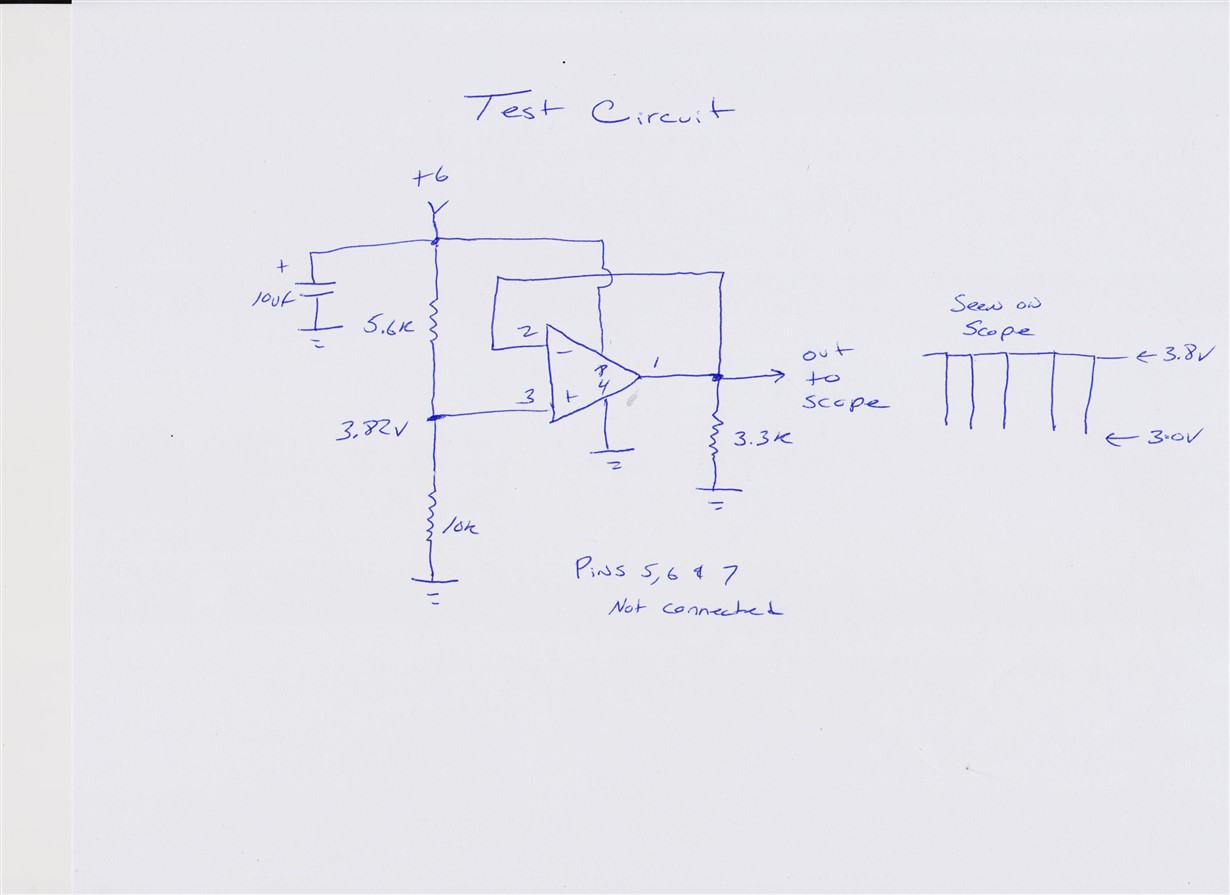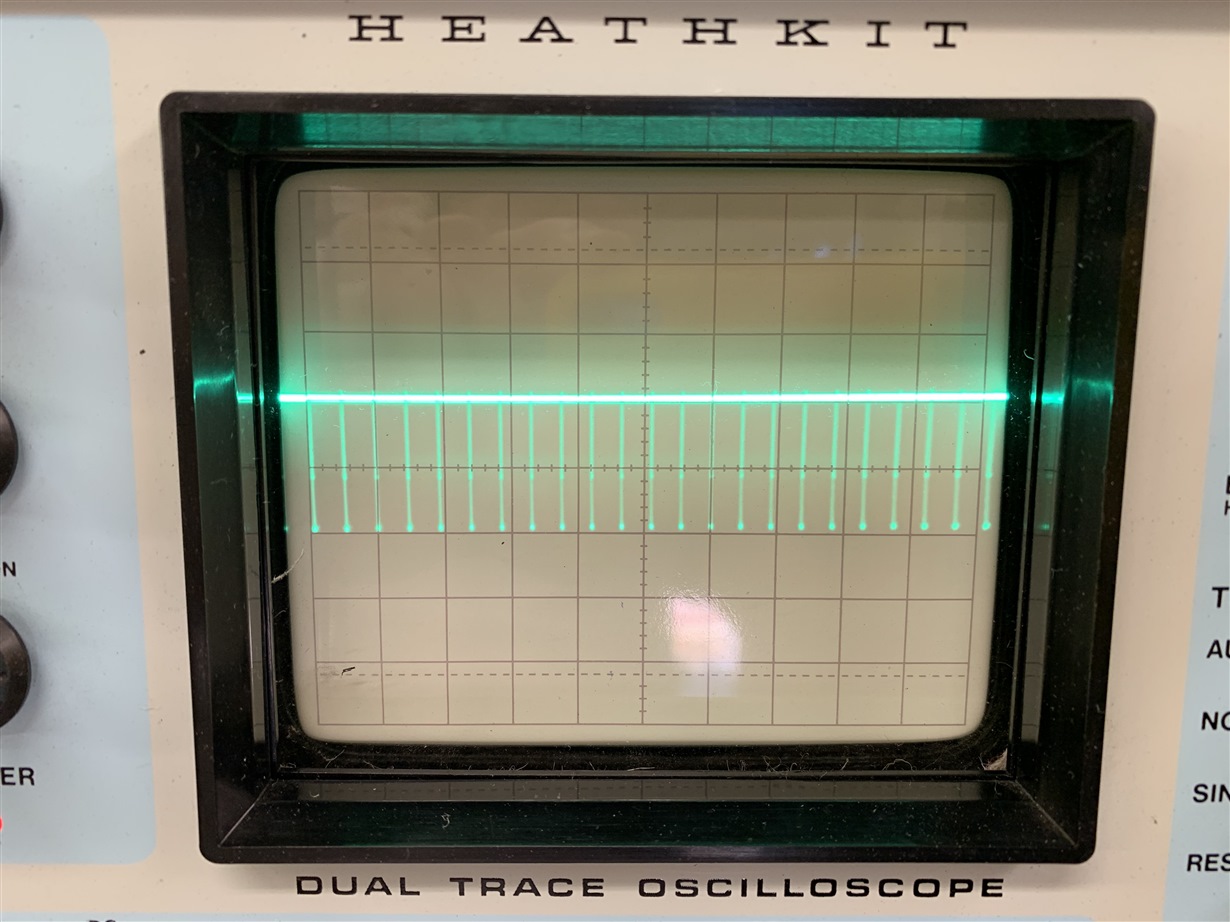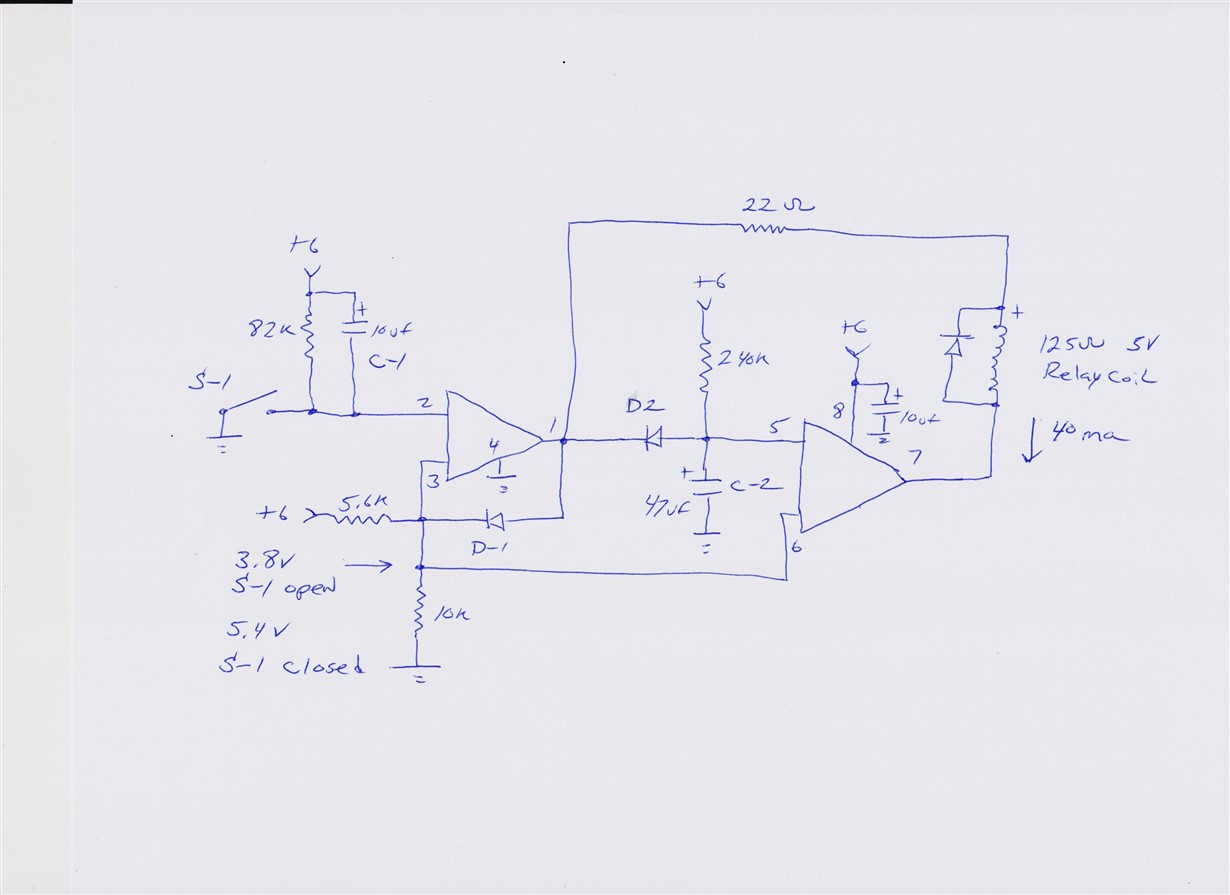Other Parts Discussed in Thread: TLV2772, TLV4111, , TINA-TI, LM7332, UA741
Purchased 2 of these TLV4112CP for a new design because the TLV2772CP could not drive my load. MY design worked fine with the TLV2772 as long as the load was not heavy, regardless I never saw any oscillations with the TLV2772. So when I put a TLV4112CP in the circuit it oscillates. To try to figure where it was coming from so I tore the circuit down and built a test circuit as a voltage follower. I put 3.8 volts on the + input and I get a series of pulses (oscillating) on the output. I have never seen a OP amp oscillate with a gain of 1. Power source is 6V single supply with a 10uf bypass right across the chip. Seem like to me the issue is inside the chip with the design. Can you shed some light on it?





